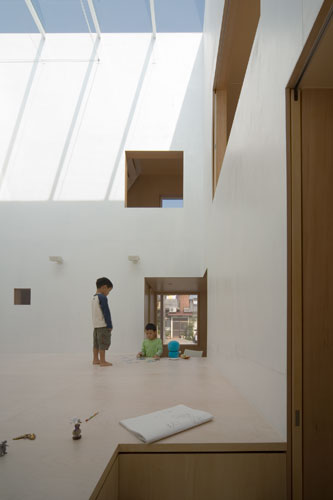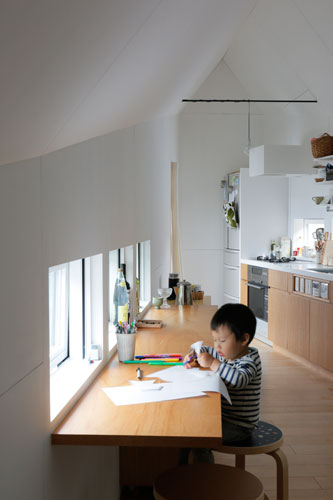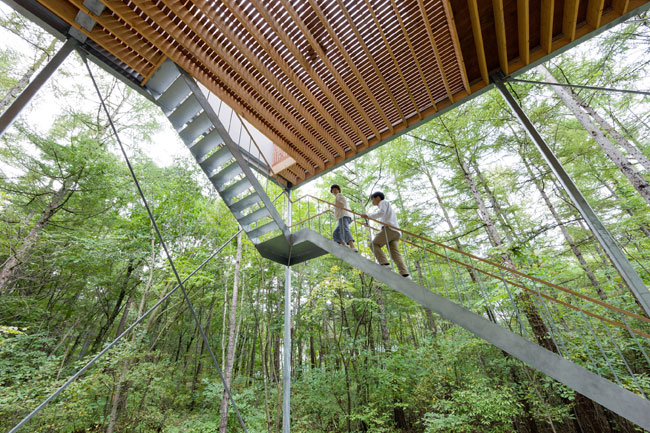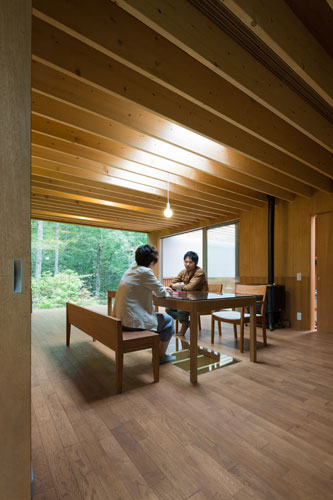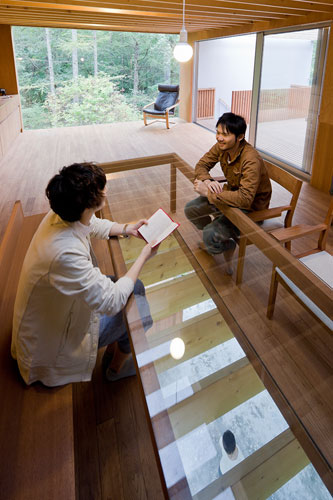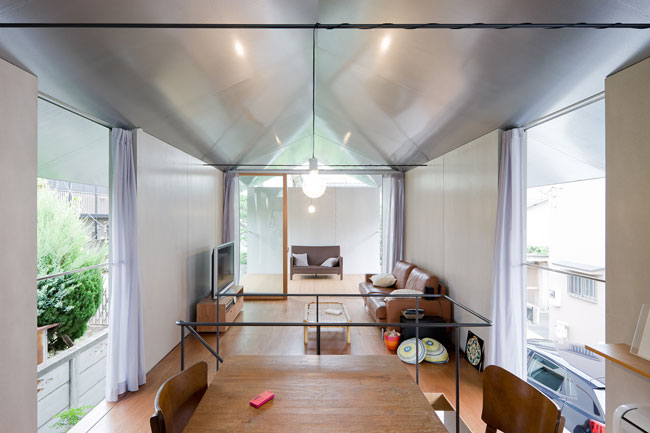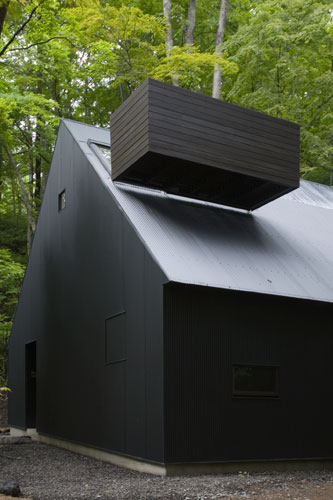Go Hasegawa and Associates
Finding inspiration in quirky, leftover urban sites, an architect makes the job of fitting in a defiant act of design.
































Tokyo
Tokyo may be among the world’s largest cities, but it has some of the smallest buildings. At critical nodes such as Roppongi and Shinjuku, the city has plenty of skyscrapers and hulking commercial complexes, yet its character is mostly defined by dense, low-scale neighborhoods where the majority of buildings are no more than five stories high. Here, in this paradox of big and little, Go Hasegawa, 37, is finding his design foothold. For Hasegawa, this process is taking place in his modest office atop a five-story walk-up in Harajuku, Tokyo’s pop-culture epicenter. Gazing out from his studio, he can survey the complex cityscape that inspires his architecture but contrasts with the suburban scenery in neighboring Saitama Prefecture, where he grew up.
A typical two-story wooden house, his family home had the usual blend of Japanese and Western elements. “My room was covered with tatami, but I dreamed of flooring,” says the architect with a grin. No doubt having a naval engineer for a father and a painter for a grandfather had an influence on Hasegawa’s decision to study architecture. So, following high school, he entered Tokyo Institute of Technology (TITECH), where he got his undergraduate and master’s degrees.
Under the aegis of Atelier Bow-Wow partner Yoshiharu Tsukamoto, his academic advisor, Hasegawa took part in the investigation of the tiny Tokyo buildings that his mentor terms “pet architecture.” Together with his classmates, Hasegawa biked around town, seeking out and documenting the city’s smallest structures. Through this research, he came to understand the play of scale in the city. Following graduation, he entered the firm of fellow TITECH alum Taira Nishizawa (Design Vanguard 2005). After three years, Hasegawa left to open his own office when family friends asked him to design their weekend getaway. Located in a vacation community in Nagano Prefecture, his clients’ property is sandwiched between a picturesque river and a heavily trafficked pedestrian pathway. Keen to take advantage of the tree-studded site, the architect answered with a house-within-a-house whose partially glazed pitched roof keeps prying eyes out but lets in light and leafy views. “I wanted to use the scale of a house in a new way,” he says.
Be it in the country or the city, Hasegawa often proposes solutions that unite urban, architectural, and furniture elements under a single roof. “In school, we learn about different scales, but I have discovered that we can combine them all in one building,” he says. Creating a house as tall as adjacent apartment buildings, as he did in Shakujiikouen, for example, enabled him to fit it on a narrow site. And incorporating an empty lot effectively augmented the tiny footprint of his House in Gotanda, making it seem bigger. “I want to build positively in such small spaces,” remarks Hasegawa.
Like Tsukamoto, Hasegawa sees potential in urban conditions that others might deem problematic. Instead of trying to conquer a site’s irregular geometry or ignore an area’s architectural vernacular, he works these qualities into his buildings. Though he is still waiting for that large commission, Hasegawa’s small buildings have already begun to have a big impact.
Go Hasegawa and Associates
FOUNDED: 2005
DESIGN STAFF: 5
PRINCIPALS: Go Hasegawa
EDUCATION: Tokyo Institute of Technology, M.Arch., 2002
WORK HISTORY: Taira Nishizawa Architects, 2002–04
KEY COMPLETED PROJECTS: House in Shakujiikouen, Tokyo, 2013; House in Kyodo, Tokyo, 2011; House in Komazawa, Tokyo, 2011; Pilotis in a Forest, Gunma, Japan, 2010; Apartment Building in Nerima, Tokyo, 2010; House in Gotanda, Tokyo, 2006; House in Sakuradai, Nagoya, Japan, 2006
KEY CURRENT PROJECTS: Apartment in Okachimachi, Tokyo, 2014; House in Yokohama, 2015
WEBSITE: WWW.HSGWG.COM
People |
Products |





